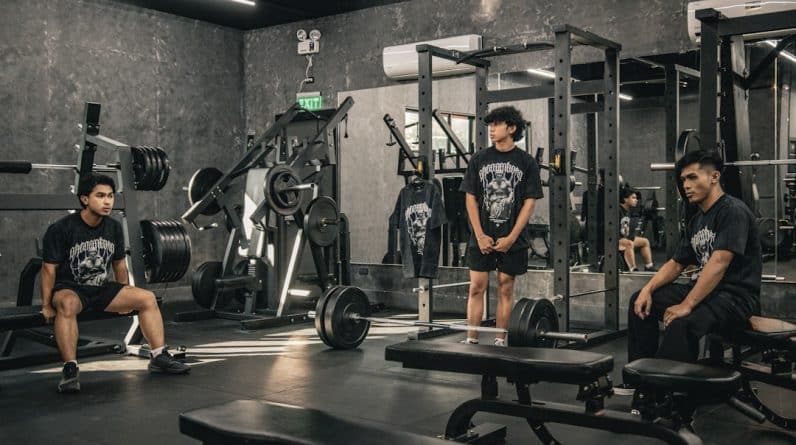
When it comes to any facility, whether it be a gym, a kitchen, or a workshop, the importance of equipment maintenance and cleanliness cannot be overstated. You may not realize it, but the state of your equipment directly impacts not only its longevity but also the safety and satisfaction of everyone who uses it. Regular maintenance ensures that machines and tools function optimally, reducing the risk of accidents and malfunctions.
When equipment is well-maintained, it operates more efficiently, which can lead to better performance and productivity. This is particularly crucial in environments where precision and reliability are paramount. Moreover, cleanliness plays a vital role in creating a welcoming atmosphere.
You want to feel comfortable and safe when using equipment, and a clean environment fosters that sense of security. Dust, grime, and bacteria can accumulate on surfaces, leading to health risks and an unpleasant experience. By prioritizing cleanliness alongside maintenance, you not only enhance the functionality of your equipment but also promote a culture of care and respect within your facility.
This dual focus on maintenance and cleanliness sets a standard that encourages everyone to take pride in their surroundings.
Key Takeaways
- Regular equipment maintenance and cleanliness are crucial for ensuring the safety and functionality of the equipment in a facility.
- Implementing regular cleaning and sanitizing procedures is essential for preventing the spread of germs and maintaining a hygienic environment.
- Equipment inspection and timely repairs are necessary to address any potential safety hazards and ensure the longevity of the equipment.
- Staff training and certification in equipment maintenance and cleanliness protocols are important for upholding high standards of cleanliness and safety.
- Members have a responsibility to maintain cleanliness by following facility rules and properly using and cleaning equipment after use.
- Proper air quality and ventilation are important factors in maintaining a healthy and comfortable environment for staff and members.
- Proper storage and organization of equipment and cleaning supplies are essential for maintaining a clean and efficient facility.
- Establishing effective communication and feedback processes can help address any cleanliness or maintenance concerns in a timely manner.
Regular Cleaning and Sanitizing Procedures
Establishing regular cleaning and sanitizing procedures is essential for maintaining a safe and hygienic environment. You should develop a comprehensive cleaning schedule that outlines daily, weekly, and monthly tasks. Daily cleaning might include wiping down surfaces, disinfecting high-touch areas, and ensuring that equipment is free from debris.
Weekly tasks could involve deeper cleaning routines, such as scrubbing floors or cleaning out storage areas. Monthly procedures might include thorough inspections of equipment to identify any potential issues that need addressing. In addition to routine cleaning, it’s crucial to implement effective sanitizing practices.
You may want to use EPA-approved disinfectants that are proven to kill harmful pathogens. This is especially important in settings like gyms or kitchens where germs can spread quickly. By incorporating these sanitizing measures into your cleaning routine, you create a healthier environment for everyone involved.
Remember, cleanliness is not just about aesthetics; it’s about safeguarding the health and well-being of all users.
Equipment Inspection and Repairs

Regular equipment inspection is a cornerstone of effective maintenance. You should schedule routine checks to assess the condition of all machinery and tools. During these inspections, look for signs of wear and tear, such as frayed cords, rusted parts, or unusual noises during operation.
Identifying these issues early can prevent more significant problems down the line, saving you time and money on extensive repairs or replacements. When you do find equipment that requires repair, it’s essential to address these issues promptly. Delaying repairs can lead to further damage or even pose safety risks to users.
You might consider keeping a log of inspections and repairs to track the history of each piece of equipment. This documentation can help you identify patterns in maintenance needs and inform future purchasing decisions. By prioritizing regular inspections and timely repairs, you ensure that your equipment remains in optimal working condition.
Staff Training and Certification
Investing in staff training and certification is vital for maintaining high standards of cleanliness and equipment safety. You should ensure that all employees are well-versed in proper cleaning techniques, equipment usage, and safety protocols. Providing comprehensive training not only empowers your staff but also instills confidence in users who rely on their expertise.
Consider offering workshops or certification programs that cover essential topics such as hazard recognition, emergency procedures, and effective cleaning methods. Moreover, ongoing training is equally important. As new equipment is introduced or cleaning standards evolve, you want your staff to stay informed about best practices.
Regular refresher courses can help reinforce knowledge and skills while also fostering a culture of continuous improvement. When your team is well-trained and knowledgeable, they become valuable assets in maintaining a clean and safe environment for everyone.
Member Responsibility for Cleanliness
While staff play a crucial role in maintaining cleanliness, members also have a responsibility to contribute to a tidy environment. You should encourage users to take ownership of their space by promoting good habits such as wiping down equipment after use or returning items to their designated places. Creating signage that reminds members of their responsibilities can serve as a helpful nudge toward maintaining cleanliness.
Additionally, fostering a sense of community can enhance member accountability. When individuals feel connected to one another, they are more likely to take pride in their shared space. Consider organizing events or challenges that promote cleanliness and teamwork among members.
By emphasizing collective responsibility, you create an environment where everyone feels invested in maintaining a clean and welcoming atmosphere.
Air Quality and Ventilation

Benefits of Proper Ventilation
Proper ventilation helps reduce humidity levels and prevents the buildup of indoor pollutants, creating a healthier environment for users.
Additional Measures to Improve Air Quality
In addition to maintaining ventilation systems, consider incorporating air purifiers or plants that naturally improve air quality. These measures can help filter out harmful particles and enhance the overall atmosphere within your facility. Regularly changing air filters is another simple yet effective way to maintain good air quality.
Prioritizing Ventilation and Air Quality
By prioritizing ventilation and air quality, you contribute to the well-being of everyone who enters your space.
Proper Storage and Organization
Proper storage and organization are essential components of maintaining cleanliness in any facility. You should establish designated areas for all equipment and supplies to prevent clutter from accumulating. When everything has its place, it becomes easier for staff and members alike to keep the space tidy.
Consider implementing labeling systems or color-coded storage solutions to enhance organization further. Additionally, regular audits of storage areas can help identify items that are no longer needed or used frequently. By decluttering these spaces, you create a more efficient environment that promotes productivity and safety.
Encourage staff to take an active role in maintaining organization by involving them in the process of sorting through supplies and equipment. A well-organized facility not only looks better but also functions more effectively.
Communication and Feedback Processes
Effective communication is key to maintaining high standards of cleanliness and equipment maintenance. You should establish clear channels for staff and members to provide feedback on cleanliness issues or equipment concerns. This could include suggestion boxes, regular meetings, or digital platforms where users can report problems easily.
Encouraging open dialogue fosters a culture of accountability where everyone feels empowered to contribute to the facility’s upkeep. Additionally, consider implementing regular check-ins with staff to discuss any challenges they may face regarding cleanliness or maintenance procedures. By actively seeking feedback and addressing concerns promptly, you demonstrate your commitment to creating a safe and welcoming environment for all users.
In conclusion, maintaining equipment cleanliness and functionality is an ongoing process that requires dedication from both staff and members alike. By prioritizing regular cleaning procedures, inspections, training, member responsibility, air quality management, proper storage solutions, and effective communication channels, you create an environment that promotes safety, satisfaction, and overall well-being for everyone involved.
When considering what to look for in terms of equipment maintenance and cleanliness at a health club, it is important to also think about setting realistic goals and expectations for your fitness journey. This article discusses the importance of creating achievable goals and having realistic expectations when it comes to your fitness routine. By setting attainable goals, you can stay motivated and track your progress effectively. Additionally, fitness for retirees and empty nesters is another important topic to consider when choosing a health club. This demographic may have specific needs and preferences when it comes to exercise, making it essential to find a facility that caters to their unique requirements.
FAQs
What equipment maintenance should I look for at a health club?
When visiting a health club, you should look for signs of regular equipment maintenance, such as lubricated moving parts, tightened bolts and screws, and overall cleanliness. Regular maintenance helps ensure that the equipment is safe and in good working condition.
What cleanliness standards should I expect at a health club?
A health club should maintain high cleanliness standards, including regular cleaning and disinfecting of equipment, floors, and other surfaces. Look for visible signs of cleanliness, such as wiped down equipment, clean floors, and well-maintained locker rooms and bathrooms.
How often should equipment be cleaned and maintained at a health club?
Equipment should be cleaned and maintained on a daily basis to ensure a safe and hygienic environment for members. Regular maintenance schedules should be in place to address any issues with the equipment promptly.
What are the consequences of poor equipment maintenance and cleanliness at a health club?
Poor equipment maintenance and cleanliness can lead to safety hazards, the spread of germs and bacteria, and a negative experience for members. It can also result in equipment malfunction and potential injuries.
What should I do if I notice issues with equipment maintenance and cleanliness at a health club?
If you notice any issues with equipment maintenance or cleanliness at a health club, you should bring it to the attention of the staff or management immediately. It’s important for health clubs to address these concerns promptly to ensure the safety and satisfaction of their members.





